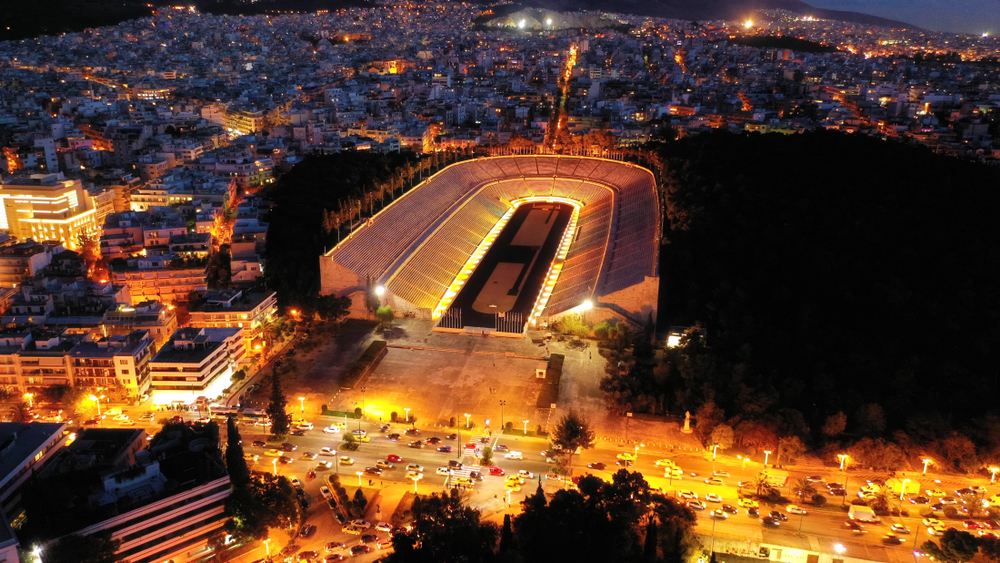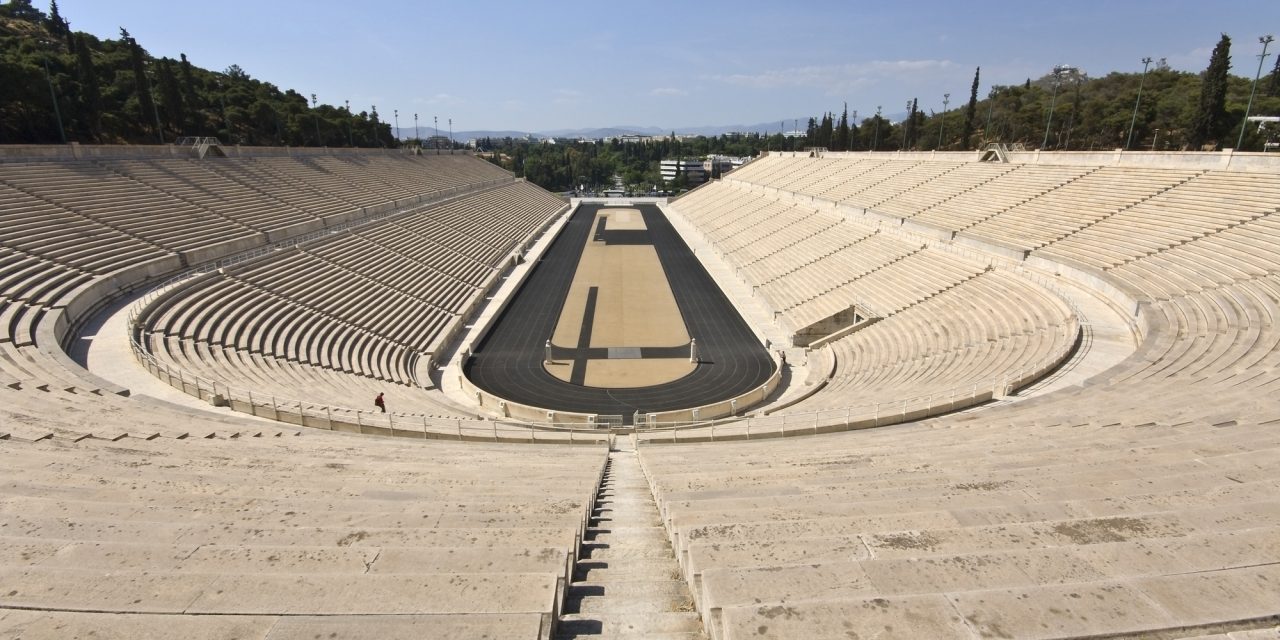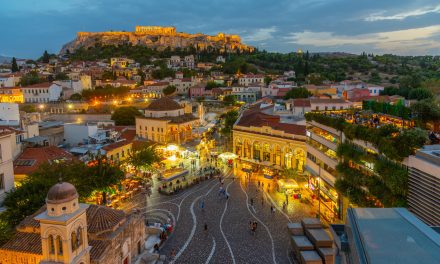The Panathenaic Stadium (Link to wikipedia) is a historic monument located in the heart of Athens, Greece. This magnificent stadium is a true testament to the rich history and culture of the ancient Greeks, and remains a popular tourist destination for people from all around the world. It is a true marvel of ancient engineering, and its significance cannot be overstated.
The stadium was originally built in the 4th century BC, during the time of the ancient Athenian statesman Lycurgus, and has been in use ever since. It was designed to host the Panathenaic Games, which were held every four years in honor of the goddess Athena. The games included a variety of athletic and cultural events, and were attended by thousands of people from all over Greece.
The original stadium was made of wood and was rebuilt several times over the centuries. However, the modern stadium that we see today was built in 1896, in preparation for the first modern Olympic Games. It was designed by the architect Anastasios Metaxas, and is made entirely of white marble, giving it a striking and timeless appearance.
One of the most impressive features of the Panathenaic Stadium is its size. It measures 204 meters in length and 33 meters in width, and can accommodate up to 50,000 spectators. The stadium is built in a U-shape, with seats arranged in tiers on either side of the central track. It also has two stone towers, one at each end of the track, which were used by judges and officials during the ancient games.
Today, visitors can walk around the stadium and admire its beauty and grandeur. They can climb to the top of the tiers and take in the stunning views of Athens that surround the stadium. There is also a small museum on site that houses a collection of artifacts and memorabilia from the Panathenaic Games and the Olympic Games that have been held in Athens.
The Panathenaic Stadium is not just a historic site, but also a symbol of the enduring spirit of the ancient Greeks. It is a reminder of their commitment to excellence and their dedication to physical fitness and cultural achievement. Its enduring beauty and significance make it a must-visit destination for anyone interested in ancient history or Olympic history.
In conclusion, the Panathenaic Stadium is a true gem of Athens, and one of the most significant historic sites in Greece. Its beauty and grandeur are a testament to the ingenuity and craftsmanship of the ancient Greeks, and its enduring significance makes it a must-visit destination for anyone traveling to Athens. Whether you are a sports enthusiast, a history buff, or simply someone looking for an awe-inspiring experience, the Panathenaic Stadium is a must-see attraction that you won’t want to miss.

Map
Athens Unveiled: A Journey through History, Culture, and Modernity
Discover the grandeur of Athens, a city steeped in history and modernity. Start at the iconic Acropolis, home to the Parthenon, and Erechtheion before delving into the artifacts housed in the Museum of Acropolis. Enjoy a live performance at the ancient Odeon of Herodes Atticus, tucked on the south slope of the Acropolis.
Lose yourself in the narrow, picturesque streets of Plaka and Kolonaki, filled with boutiques, cafes, and art galleries. Indulge in shopping on Voukourestiou and Ermou streets, renowned for their luxury brands and local crafts.
Explore the vibrant neighborhoods of Monastiraki and Psiri, teeming with eclectic markets and tavernas. Take a look at our Monastiraki Flea Market Shopping Guide. Take a stroll through Thissio, where you can enjoy breathtaking views of the Acropolis. Gkazi, known for its vibrant nightlife, is a must for evening entertainment.
Climb Mount Lycabettus (read about Lycabettus Theatre) and Philopappos Hill for panoramic views of the city. Visit the National Archaeological Museum to view Greek art and the Academy of Athens for a taste of neoclassical architecture.
Experience the world’s only marble stadium, the Panathenaic Stadium, and catch a show at the Athens Concert Hall. Keramikos, an often-overlooked archaeological site, is rich with ancient tombs and ruins. Don’t forget to check our guide on Keramikos delicious local cuisine.
Athens is a city where ancient history and contemporary culture blend seamlessly, promising an unforgettable journey. Must read: A tour of its most significant landmarks and a tour of its ancient sites.








